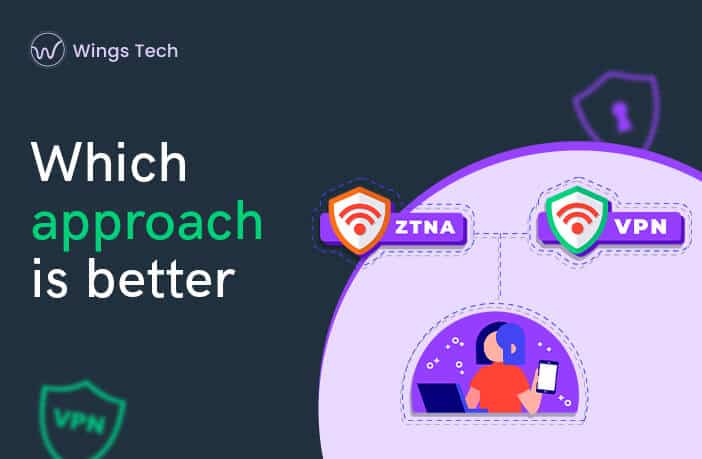ZTNA vs. VPN: What’s the difference?

Ineffective. Obsolete. Unrealistic.
These are just a few of the words commonly used by IT admins when discussing perimeter-based security approaches that incorporate VPNs.
Remote work policies have unleashed A new avalanche of security concerns, highlighting the inadequacies of old-school network security architectures.
In this article, we will explore the two approaches. With modern network security solutions, you will know how to reduce attack surfaces in private, public, and hybrid cloud environments.
What is ZTNA?
ZTNA is a security solution that implements zero trust security techniques with application-specific access permissions. The access of remote workers to corporate assets will be determined on a case-by-case basis based on role and context-based access controls, such as IP addresses, location, user groups or roles, and time constraints.
What is a VPN?
A VPN provides remote users with the same experience as connecting directly to a corporate network. All data is sent over an encrypted channel from the VPN client software to the VPN endpoint on the enterprise network before it is routed to its destination. By using perimeter-based security solutions, all business traffic can be inspected regardless of its source, protecting against eavesdropping.
ZTNA vs. VPN: What’s the difference?
1. Approach to Security
A ZTNA solution works by combining security automation tools with adaptive security policies to restrict or grant access to a company’s network. According to this principle, users only have access to the data and applications they need based on their roles. Organizations can effectively protect their networks with context-aware, risk-based security decision-making provided by ZTNA, which assumes every device or user is a potential threat.
VPN security takes on a completely different approach. Employees or other authorized users can connect remotely using VPNs, protected by firewalls at every connection point or on the device itself. To securely connect a user to the internet from their location, data is encrypted and transmitted through a virtual tunnel. ZTNA security is dynamic and based on real-time risks in a company’s environment, unlike VPNs that use a central entry point to authenticate users.
2. Complexity
In order to provide good performance and user experience, organizations that use VPNs for remote access must decide where to place VPN gateways. Due to their infrastructure-centric nature, VPNs are limited in capacity and number of entry points due to their reliance on appliances. Many organizations operate within hybrid cloud environments with hundreds, if not thousands, of endpoints connecting to the network, making VPNs less appropriate for on-premise environments and flat networks. As well as adjusting routing, organizations need to create firewall or access control list rules to authorize applications when using VPNs. Multi-Layered security, robust security intelligence, and automation are all required to manage this complexity and risk, which are all features of ZTNA technologies.
3. Performance
Performance is another difference between ZTNA and VPN. Due to the need to backhaul traffic to an enterprise data center, VPNs often have slower connections. As a result of the distance between a user’s location and the server’s location, the slower the connection will be the farther away the user is. Work-from-home applications with high data requirements, such as videoconferencing and digital workspaces, can be delayed as a result. ZTNA solutions are more scalable than traditional VPNs, but they take a lot of time to deploy and are not scalable when needs spikes. As a result of VPN-based security, connections are not as transparent as zero trust, especially if they are infected with malware.
If a user connects through their home network, happens to be on a public Wi-Fi network, or if a company wants to provide secure access for employees at different branches, VPNs provide some measure of protection. Today’s threat environment and the increased possibility of insider threats may make the traditional castle-and-moat approach to security less effective for many organizations. There is a risk in granting access to every user, even after the perimeter extends to employees’ homes and wherever they choose to work remotely. Organizations need to restrict access and verify identities in order to strengthen their security posture.

















